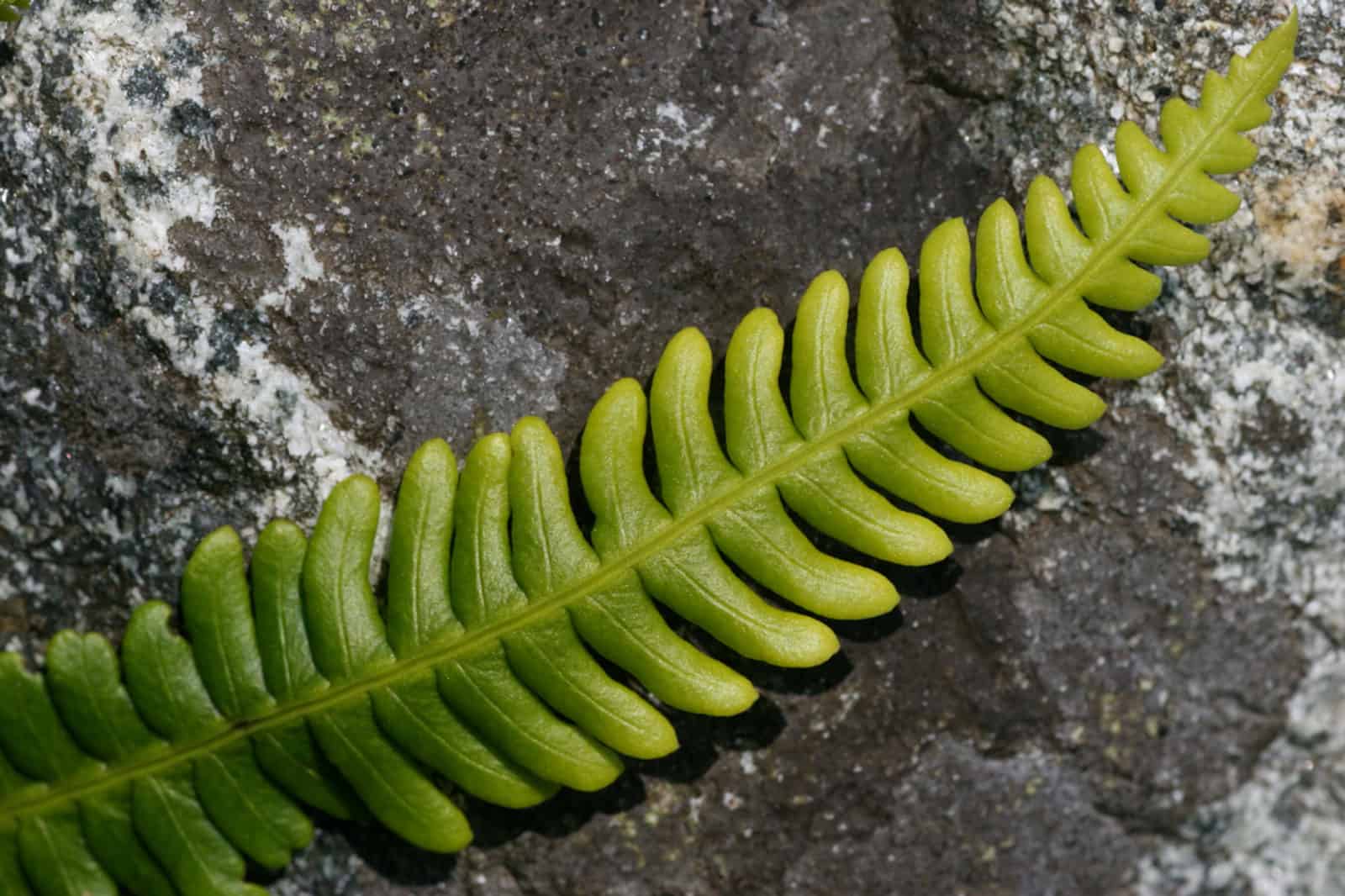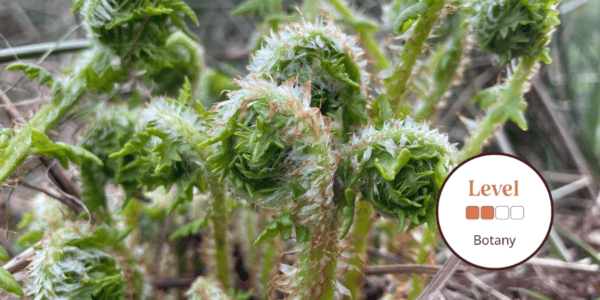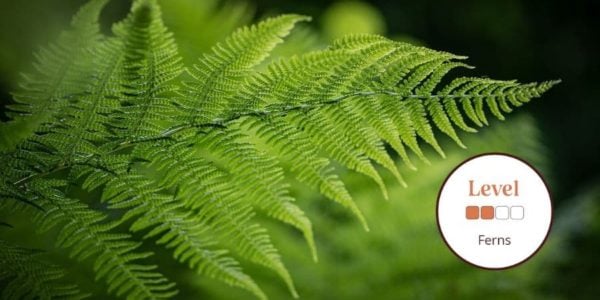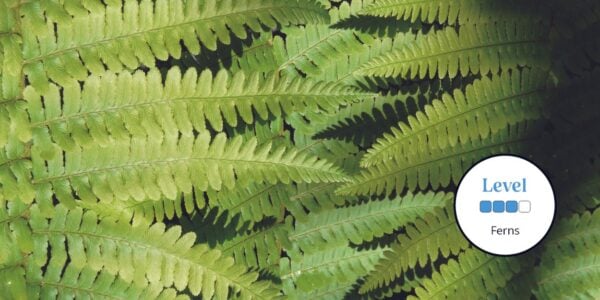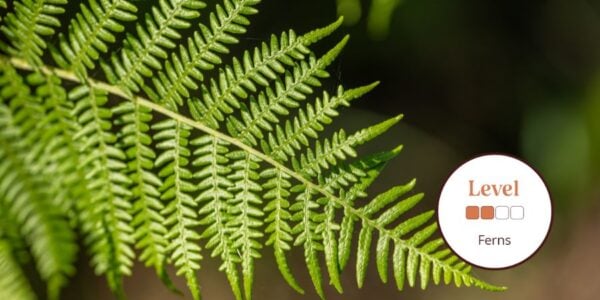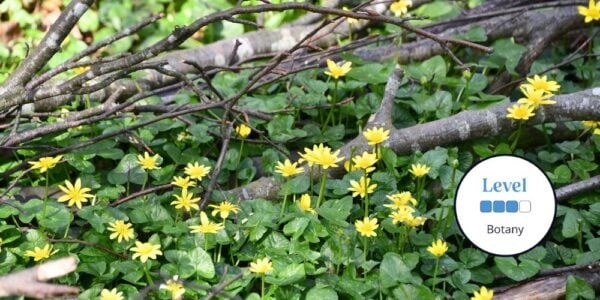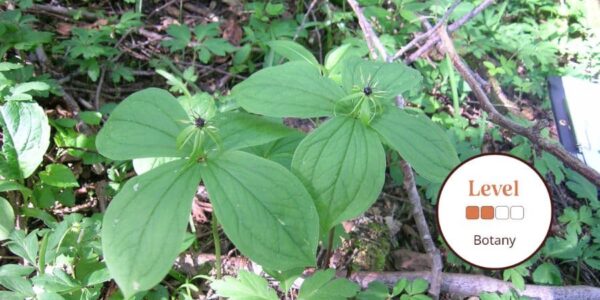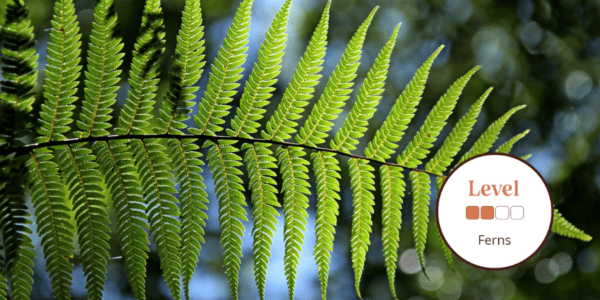
Discover more as you learn about UK Ferns and improve your skills on our beginner to advanced courses.
We run regular fern courses throughout the year delivered online and UK wide by expert tutors and follow a framework to progress your learning at a level to suit you.Ferns and horsetails produce spores rather than seeds and have a great scientific name – the Pteridophytes.
Fern Identification
They have a vascular system to allow transportation of sugars around the plant in tube like structures called Phloem (for sugar solutions) and Xylem (for water). A vascular system to distribute nutrients throughout the plant allows them to grow tall.
Some ferns grow up to 80 feet tall, and some extinct horsetails were tree-sized. Being seedless means spores are produced and combine to produce a small gametophyte. The fern you actually see is a diploid sporophyte and the plant undergoes a fascinating reproductive cycle called the ‘alternation of generations’. Horestails are in the same group.
These plants consists of long, hollow, narrow stem segments with minisule, non-photosynthetic leaves. Both are often classed as ancient organisms as they existed at the same time as the dinosaurs! Being mostly shade tolerant they are an important part of the woodland ground flora and also occur in some fascinating habitats such as the clints and grykes on Malhams limestone pavement and the screes lopes of Snowdonia. Botanical specialties are not to be missed.

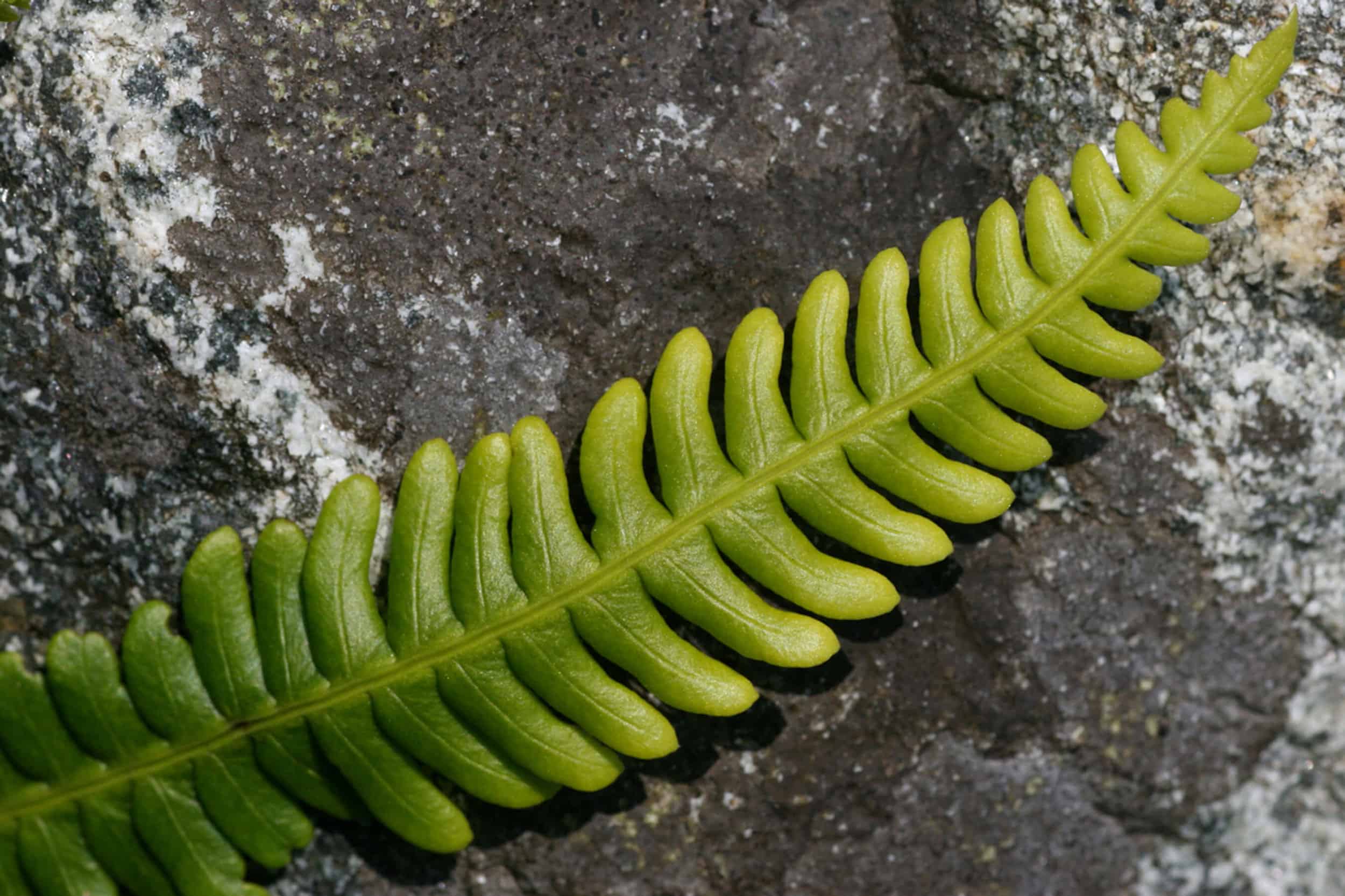
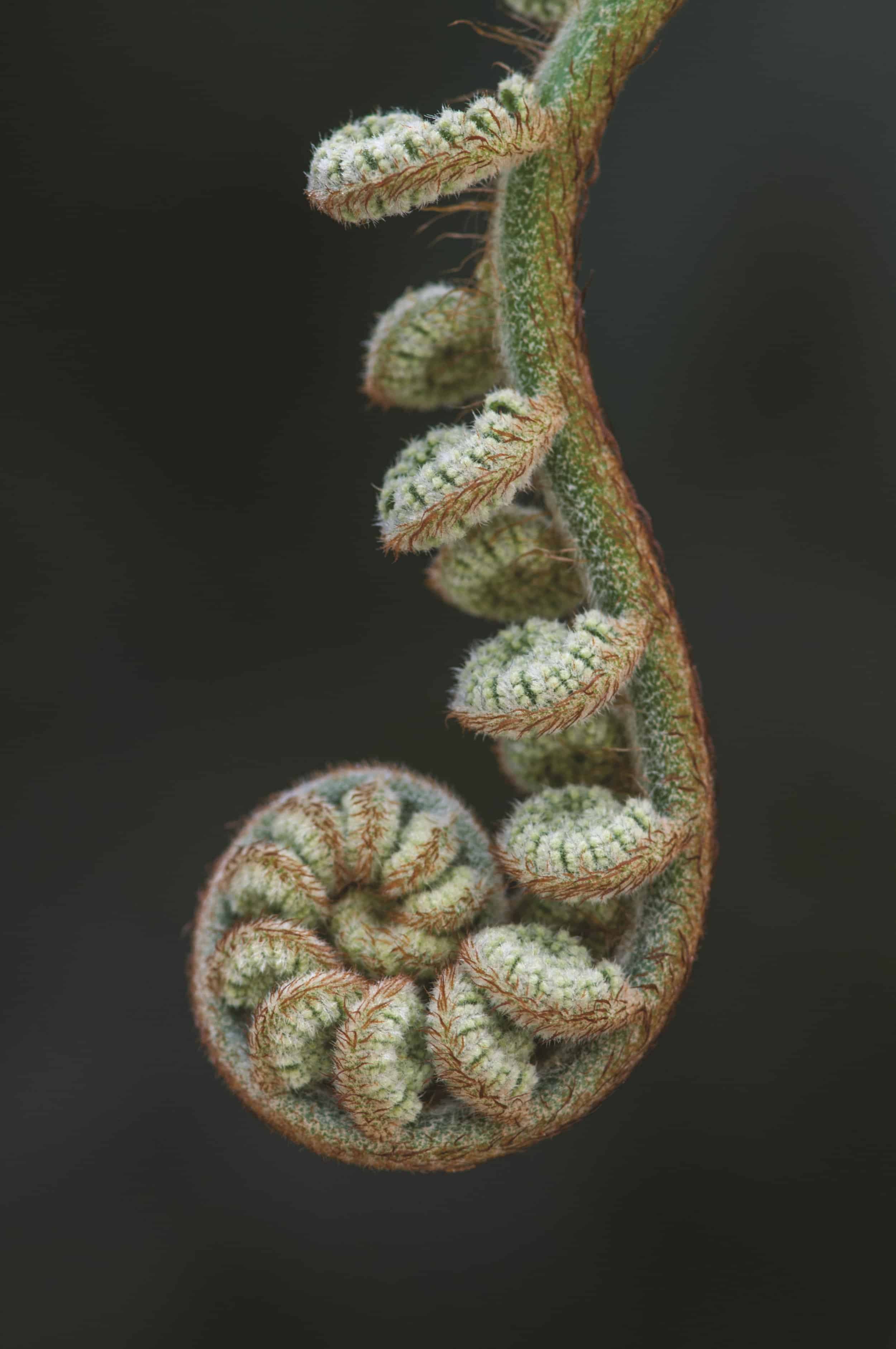
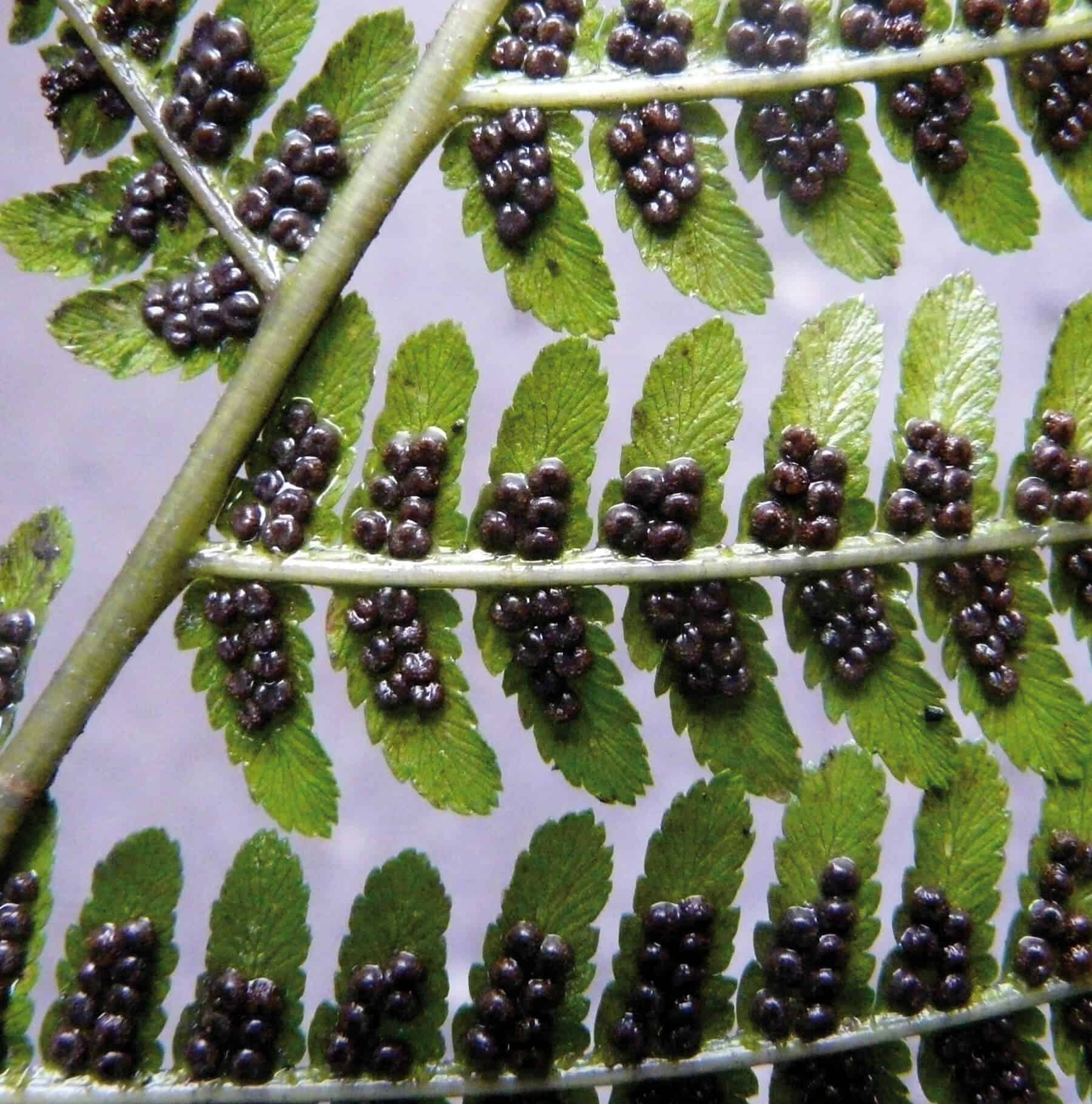
Fern Courses
Our fern courses are delivered by experts in the field, and will equip you with the skills and knowledge to discover more about the this ancient plant. Our beginner courses are for anyone interested in discovering and exploring the ecology of British ferns. You can learn how to identify the key characteristics of different species and acquire or improving identification skills.
Fern Identification courses and training is led by expert tutors who are passionate about the subject. Taking place at venues across the UK, or online, our courses are designed to progress your learning at a level to suit your needs. If you are interested in our fern online training, you can read about our Moodle learning environment.
Each course is part of a learning framework. You can see the course level descriptions here. Natural history courses are available at all levels from beginner through to professional training.
FSC run regular fern identification courses the year. For details of our courses, and to learn more about butterflies and moths, please view our courses above.
Identification Resources
The AIDGAP Fern Guide covers the 59 species of fern, 6 clubmosses, 3 quillworts and 8 horsetails found in the British Isles. From hart’s tongue to hard fern, from oak fern to wall-rue,
The Fern Identification Chart features the commonest 38 species of ferns found in Britain and Ireland.

